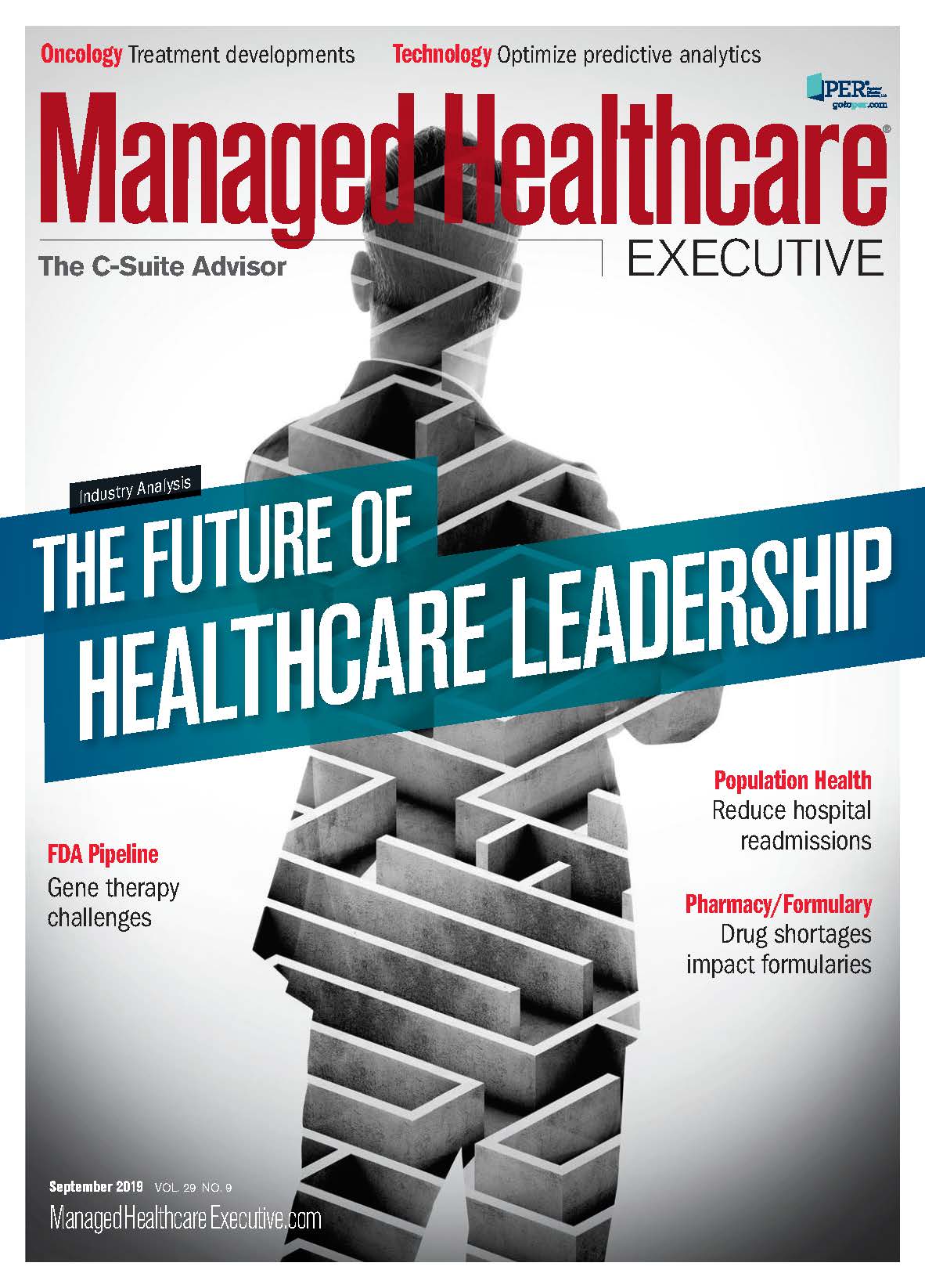- Drug Coverage
- Hypertrophic Cardiomyopathy (HCM)
- Vaccines: 2023 Year in Review
- Eyecare
- Urothelial Carcinoma
- Women's Health
- Hemophilia
- Heart Failure
- Vaccines
- Neonatal Care
- NSCLC
- Type II Inflammation
- Substance Use Disorder
- Gene Therapy
- Lung Cancer
- Spinal Muscular Atrophy
- HIV
- Post-Acute Care
- Liver Disease
- Pulmonary Arterial Hypertension
- Safety & Recalls
- Biologics
- Asthma
- Atrial Fibrillation
- Type I Diabetes
- RSV
- COVID-19
- Cardiovascular Diseases
- Breast Cancer
- Prescription Digital Therapeutics
- Reproductive Health
- The Improving Patient Access Podcast
- Blood Cancer
- Ulcerative Colitis
- Respiratory Conditions
- Multiple Sclerosis
- Digital Health
- Population Health
- Sleep Disorders
- Biosimilars
- Plaque Psoriasis
- Leukemia and Lymphoma
- Oncology
- Pediatrics
- Urology
- Obstetrics-Gynecology & Women's Health
- Opioids
- Solid Tumors
- Autoimmune Diseases
- Dermatology
- Diabetes
- Mental Health
Making the Most of Predictive Analytics
Data is only valuable if it’s analyzed correctly. But that’s easier said than done.

With the saturation of electronic health records, healthcare organizations have a wealth of patient data that could assist with predicting outcomes and lowering costs. But many aren’t using predictive analytics for clinical or financial outcomes for their organizations.
Predictive analytics is defined as data mining, machine learning, and statistical modeling of historical patient data to predict future outcomes. A 2018 survey of healthcare payer and provider executives by the Society of Actuaries found that 87% of executives say that predictive analytics is important to the future of their business and 60% believe that predictive analytics can save their organization 15% of more in the next five years. Only half of providers surveyed and 45% of payers reported current use of predictive analytics. Within five years, 87% of providers and 83% of payers say they plan to begin or grow use of predictive analytic tools at their organizations.
Most large hospitals and health plans have access to the tools needed to use predictive analytics effectively, but smaller organizations are still falling behind, says Bharat Rao, PhD, principal in the advisory services practice at KPMG LLP.
Related article: Three Reasons Managed Care Organizations Should Use Advanced Analytics
“I would say the small physician offices, which are directing a lot of the care in the U.S., are not using predictive analytics in the most effective ways. They have more difficulty getting a handle on their data,” says Rao. “But even the large health systems and stand-alone hospitals, though they may have the tools to use predictive analytics, many aren’t using them effectively.”
With the amount of data being captured, many healthcare organizations are struggling with how to use it in the smartest ways, says Beth Godsey, vice president of advanced analytics and informatics for Vizient, Inc., a member-driven, healthcare performance improvement company, in Irving, Texas.
“Healthcare organizations are sitting on a wealth of patient data and yet have only begun to scratch the surface on utilizing predictive analytics and machine learning to extract its most important insights,” Godsey says. “I frequently hear from some of the top hospitals in the country, ‘how do I thoughtfully bring predictive insights to my clinicians that can improve not only their work flow efficiency, but also patient care?’”
Using predictive analytics for high-risk patients
One of the most valuable use cases for predictive analytics is identifying and engaging high-risk patients. An analysis by Relias Analytics of raw claims data from the Illinois Behavioral Health Home Coalition to identify and predict outcomes of high users of care was able to reduce inpatient admissions by 57%, emergency department visits by 31%, and total cost of care by 40%. Annual savings associated with the patients in the study was $1 million.
Nate Regimbal, digital transformation senior manager with Grant Thornton, an accounting and consulting firm, says that predictive analytics techniques can identify patients at high risk for being late to or missing an appointment.
“When the analytics predict a risk with a high enough confidence level, it can trigger a work flow that includes contacting the patient, or scheduling (to afford other patients the opportunity to see the doctor), or staffing (to optimize shift schedules). The analytics for this are now straightforward,” Regimbal says. “The harder part is operationalizing the analytics insights and managing the change and performance implications so that the benefits are fully realized.”
Regimbal adds that risk stratification via advanced analytics drives benefits with payers and providers. Predictive analytics applied to claims processing, procedural coding to member policy, and determining adequacy of information to proceed with claims processing can result in higher accuracy overall, which can bring down payer costs and subsequently prices.
“On the provider side, cohort- and predictive-analytics enabling what’s commonly referred to as ‘patients like me’ analytics can provide insights on emerging patterns that a physician may not have had the means or time to have recognized without the analytics,” Regimbal says.
Lowering readmissions using predictive data
Having the ability to predict patients who have a higher chance of readmitting and take into account other factors that can attribute to readmissions, says Michael Simon, data scientist at Arcadia, a population health management company, in Burlington, Massachusetts.
“A patient with multiple comorbidities may already be in a well-established care management program that follows best practices. However, with predictive analytics, providers can understand the risk this patient has for being readmitted to a hospital after a future inpatient admission,” says Simon. “This allows the provider to intervene from the beginning to reduce the chance of that readmission and improve the clinical outcome for that patient.”
Incorporating social determinants of health into predictive analytics of patients can also help to identify additional risk factors in patients’ lives that would adversely affect their ability to adhere to care plans, says Rich Temple, vice president and chief information officer of Deborah Heart and Lung Center in Browns Mills, New Jersey.
Related article: How Three Hospitals Use Predictive Analytics to Reduce Readmissions
A 2018 Duke University study published in the Journal of Informatics in Health and Biomedicine was able to use historical EHR data from more than 4,000 no-show appointments to create predictive analytics models to determine whether a patient is a risk for not showing up their appointments and why.
“Examples of social determinants of health are lack of access to transportation or healthy food and lack of a decent home or supportive family members. Having these types of challenges makes it much harder for people to be able to properly focus on their health,” Temple says. “The science of predictive analytics is beginning to develop algorithms to track who these individuals may be and respond with carefully customized ways of reaching them to help them on their health journeys.”
The future of predictive analytics
Rao says as patients become more empowered and informed consumers, the demand for tech-enabled care will continue to grow.
“Healthcare providers wanting to be competitive in the market will need systems where data and technology provide information,” Rao says. “The patient or the caregiver of the patient will want control of their own data and analytics so that they can feel like a participant in their own care. The opportunity that you have in the large systems is the organization of data to engage the patient or caregiver to jointly manage it.”
Simon says that predictive analytics will be able to help providers identify how prescriptions will impact intervention programs and if that prescription will likely benefit or negate the benefits of the care management program.
Related article: Four essential players for your healthcare data analytics team
“For patients with complex medical conditions, the impact of prescriptions on their medical experience can be significant both mentally and physically, so predicting how a patient will respond to the entire intervention will be critical,” says Simon.
Godsey says the possibilities for predictive care using genomic markers and personalized care is on the horizon. “While healthcare is swimming in a sea of data, there is yet an even vaster universe of data we have yet to fully tap,” Godsey says.
Donna Marbury is a writer in Columbus, Ohio.

In the Scope of Virtual Health and the Future of “Website” Manner, Per Ateev Mehrotra
August 10th 2023Briana Contreras, an editor of Managed Healthcare Executive, had the pleasure of catching up with MHE Editorial Advisory Board Member, Ateev Mehrotra, MD, MPH, who is a professor of healthcare policy at Harvard Medical School and an Associate Professor of Medicine and Hospitalist at Beth Israel Deaconess Medical Center.
Listen
Extending the Capabilities of the EHR Through Automation
August 2nd 2023Welcome back to another episode of "Tuning In to the C-Suite," where Briana Contreras, an editor of Managed Healthcare Executive, had the pleasure of chatting with Cindy Gaines, chief clinical transformation officer at Lumeon.
Listen
